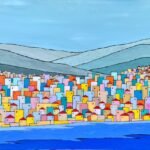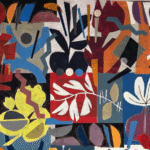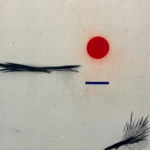[“The following copyrighted article is shared
with permission, and courtesy of theartpulse.com”]
Source link
An Article by MR (743 words, 4 min. read)
In every society where art exists (Lebanon included) there is an unspoken truth: artists are not always elevated because of their talent, innovation, or the sincerity of their vision. They are elevated because someone decides they should be. Institutions, galleries, patrons, curators, social circle: these forces often shape an artist’s destiny long before the public ever sees their work.
In Lebanon, where the art ecosystem is tightly entwined with personal networks, visibility is frequently dictated by who is championed, who is connected, who belongs to a certain circle, or who fits the narrative a gallery wants to sell. Talent helps but it is rarely the deciding factor.
The Gatekeepers of Culture: Galleries, Curators, and the Myth of Meritocracy
Galleries are often perceived as neutral spaces that actually “discover” talent. In reality, many galleries, especially in small art communities, promote artists who are already familiar with them, aligned with their collectors’ tastes, or embedded in their social world. It becomes less about artistic risk, and more about the safety of marketability.
Curators, too, can unintentionally reinforce this bias. Their network becomes the pool from which they curate. Exhibitions begin to look like repetitions of the same names, the same aesthetics, the same comfortable choices. The myth of a merit-based ascent dissolves quickly when one sees how many extraordinary artists remain unexhibited simply because they weren’t on the right radar.
But it is just as important to acknowledge that not all gallerists, curators, and cultural decision-makers operate this way; Some are genuine lovers of art who fight against these biases, championing artists purely because they believe in their work. They are the quiet but essential counterweight to the system.

Lebanese Art: A Mirror of Society
Lebanese society often relies on relationships, alliances, and reputation, so it is no surprise that the art community echoes this pattern. Some artists are repeatedly featured in museum shows, biennials, and gallery rosters not because they produce groundbreaking work, but because they belong to a circle that has decided they are “important.”
This doesn’t mean these artists are untalented; many are brilliant. But it does mean others who are equally brilliant, or even more daring, remain invisible. The result is a cultural landscape that reflects not the full richness of artistic voices, but the preferences of a limited set of gatekeepers.
Examples From the Global Stage When Power, Not Talent, Drives Visibility
The Lebanese art world is not unique. Internationally, countless examples reveal the same structure:

1. The Rise of the Market-Backed Star
Some contemporary artists reach global fame because powerful galleries and mega-collectors push them. Their auction prices soar not because of artistic breakthroughs but because of an orchestrated market strategy. The artist becomes a brand (a product) whose value is manufactured through exposure, publication, and repetition.
2. The “Curatorial Favorite“
Certain artists become staples of biennials and museum shows simply because curators prioritize them. Even if their work stagnates or becomes predictable, their presence continues because institutions prefer familiar names that guarantee attendance and critical approval.
3. Social Circles as Career Catapults
Across New York, Paris, and London, entire communities of artists thrive because they belong to influential groups, artist collectives, academic networks, and residency alumni circles. Being “in” is often more influential than being excellent.
These examples are mirrored, on a smaller scale, in Lebanon, where the art world is a condensed version of the global model.
The Unseen Artists
For every promoted artist, there are dozens who work tirelessly in their studios, refining their language, innovating in solitude, and pushing boundaries without validation. Their names rarely appear on gallery walls, not because they lack depth or talent, but because no one with power has chosen to highlight them.

These artists form the quiet backbone of Lebanese cultural identity are the unseen voices shaping the emotional and intellectual texture of the country’s art, even if their contributions remain publicly unacknowledged.
A Call for a Fairer Art Landscape Beyond Circles, Beyond Favorites
If the Lebanese art world (and the global one) wants to evolve, it must confront its biases. It must widen its lens, open its doors, and question why certain artists are pushed while others are ignored. Institutions must dare to take risks, galleries must diversify their representation, and curators must look beyond familiar names.
Art flourishes when the system stops choosing winners in advance.
Every artist deserves to be seen for their work, not for those they know.






